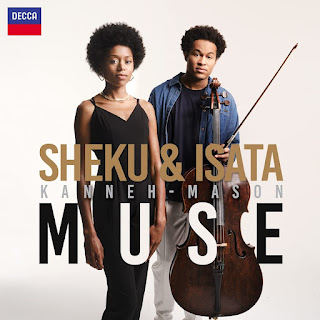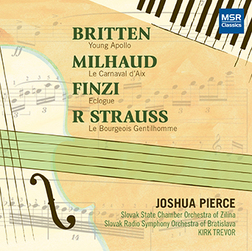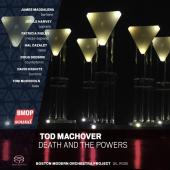Each day we go forward and with any luck learn good things. Musically that is ever the case in my life. Today we have something not entirely expected, but then once the music plays a number of times it starts to sound like some part of home, the home of the contemporary world, the Modern as it twists and turns in ways we never thought around, say, 1974.
It is voces8 and their enchanting voices giving us a 15-work program entitled Infinity (Decca 4851626). Their website tells us that the album "embraces renowned composers alternative, film and contemporary classical music" for voices, and at times accompanying instrumental parts. Eight works were specially commissioned for the album, while the remaining are "choral versions of calming instrumental pieces." Now that "calming" aspect might be telegraphic for some kind of "New Age" mélange, but serious listening to this program affirms that the musical content is by no means facile and purely functional.. Plenty of effort and musical inspiration has gone into this music as a whole.
In other words the program plants its stylistic flag squarely into a kind of Postmodern ambiance, a rather meditative spatial emission. Now I like most everybody these days recognizes a planetary malaise that can heighten all kinds of anxious thoughts, fears, worries, and if some music promises to counter that, are we to reject such a thing in the interest of High Modernist insistence? Probably not. It is our call. And I do not mind the idea of something sprawling spatio-temporally outward to a calm place.
An old friend years ago announced to me that he had basically had it with the Avant Garde in music because he already felt a kind of misery of life and, he went on. "Who needs to hear that all over again in the music?" What I said then in response is not relevant to today, really. Of course with the advent of the Postmodern per se, Brian Eno's ambiance, even some of the later works of Cage, well one might find plenty of music made since 1975 give or take, music that pulls the shade down on dissonance and fire in favor of something potentially soporific but then has the challenge of being contentful, structurally sound, syntactically perhaps looking far back into the Early Music worlds as it also carves out a vision of the futuristic present.
What could be wrong with that in those simple terms? And do we need to assert then, like my friend unfortunately did, that we should abandon music that challenges our sense of confluence and rips asumder the staid musical worlds it had tried to replace on some level? Certainly not. I've said this before but think about it differently--if we get away from musical considerations for a minute, we would be perhaps too extreme if we, for example decided that all movies from this point forward were to avoid tension, dramatic horror, contrary plot suspense? Probably a bad idea.
So my response to the music on this program is not supposed to be an advocation that this music replaces other styles. Iti s rather than it can stand along other altogether different things and not be the everything in music that we perhaps increasingly find an outmoded idea?
If along the way this album might prove popular to listeners who would perhaps avoid the Modern music worlds of the higher octane dissonant realms like they might avoid watching "Psycho?" Well probably but that does not force us to follow in those footsteps.ourselves. I might venture to say that even Elevator Music of the '50s at its best might be heard with some pleasure, without assuming the genre has some right of hegemony over our musical tastes.
So the music comes to us not as some obligation, but more as a gift, free to receive and enjoy. So we hear some 15 miniatures by people you may or may not know of, Sophie Hutchings, Slow Meadow, Jon Hopkins, Porkell Sigurbjornsson, Johann Johannsson, Kelly Lee Owens &Sebastian Plano, Olafur Arnalds, Anne Lovett, Benjamin Rimmer, Ola Gjeilo, Stephen Barton, Nainita Desai, Hildur Gudnadottir, A Winged Victory for the Sullen and finally Luke Howard. All in common is the kind of placid Ritual Tonality and sometimes a tinge of early music spatiality, some reaching out after a few listens and staying with you, others take a bit more focus but altogether we get a distinct mode locality, a planar expanding outwards for a beautifully lucid chamber vocal group of extraordinarily consistent lyricality.
After a good number of listens the music retains its consonance but began to stand out as content worthy, a goodly ways beyond what New Age requires of its composers. If this was the music we were somehow required to like to the exclusion of all else, I would probably balk. Given our ear freedom that is not the case, and so this becomes a pleasant change of mood and a substantial batch of chamber choral music that should appeal to a good number of folks out there. I recommend this one without hesitation. Voces8 is a beautiful ensemble and the music has a lurking sweetness that does not cloy.
































